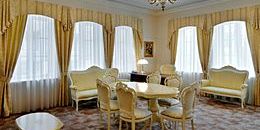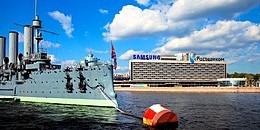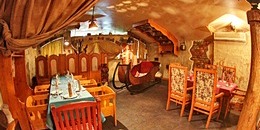Petrogradskaya Naberezhnaya (Petrograd Embankment)
Prior to 1903, the Petrograd Embankment was considered a part of the Petrovskaya Embankment, the very first embankment of St. Petersburg. Now a separate address, it can still boast several interesting sights and monuments. Most notably, it is home to the permanent mooring of Russia's most famous ship - the Cruiser Aurora. Elsewhere, red-brick industrial buildings and Art Nouveau mansions from the turn-of-the-century stand next to modern commercial buildings and 19th century barracks.
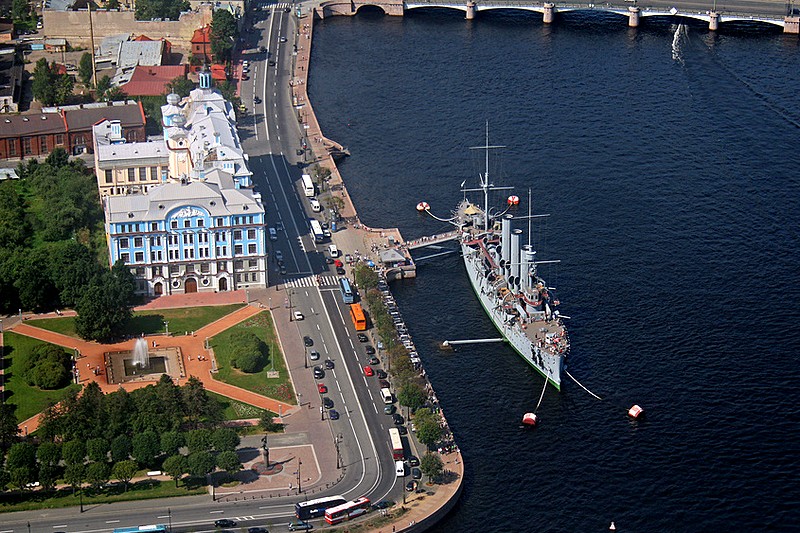
In the middle of the 18th century, the waterfront was simply called the Waterfront Line, similar to the rest of the nameless embankments of rivers and canals in St. Petersburg. It then received the name Dvoryanskaya (Nobility) to represent the members of this class that were living here. In the beginning of the 19th century, a vast area between the Dvoryanskaya Embankment and Karpovka River was occupied by military barracks. The simple stone buildings were built by the famous classical architects Fyodor Volkov and Luigi Rusca and housed mostly the Grenadier regiments, as well as some other. In particular, house number 44 was the officers quarters of the Grenadier Lifeguard Regiment, built 1805-1807 by Rusca, where the great symbolist poet Alexander Blok lived during his high-school and college years.
In 1887, the embankment was called Peterburgskaya and then in 1914 renamed Petrogradskaya after St. Petersburg itself was renamed Petrograd. In 1889, architect Vasily Schaub erected an elaborate Renaissance Revival two-story house (No. 32) here. The house belonged to the merchant Schroeder, and has recently been restored.
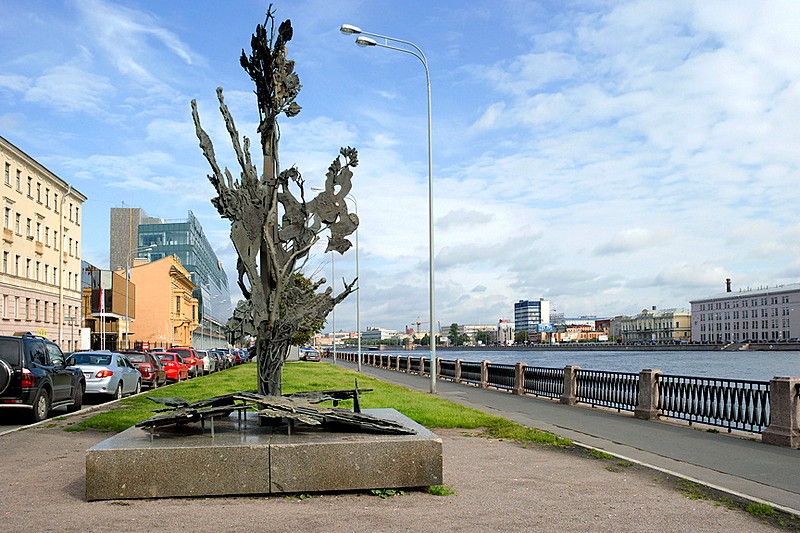
It was only in 1901-1903 that the first section of the embankment, from the southern end to the Sampsonievsky Bridge was encased in granite. At this time many interesting buildings were constructed here, among them the, Lubishchev Apartment House (No. 26) by the St. Petersburg master of style moderne, Georgy Khrzhonstovsky. The immediate attraction of the building is the graceful "Moorish" cupola crowning the building. In front of the house, an unusual monument to the inventor and industrialist Alfred Nobel stands, directly across the Bolshaya Nevka River from his family's St. Petersburg factories.
The real masterpiece of the Petrograd Embankment is the Nakhimov Naval College. Built in 1910-1912, the building's bright, smart facade displays elements of baroque and Art Nouveau. Continuing a popular St. Petersburg motif originated at the Admiralty, a thin spire rises several meters above the roof of the building and is topped by a weather vane in the form of a ship. In 1948, the Cruiser Aurora was permanently moored in front of the college. This legendary vessel of the Russian Navy - which participated in the Russo-Japanese war of 1904-1905 and fired the shot that signaled the beginning of the Bolshevik Revolution in 1917 - has become a world-famous monument and floating museum.
In 1966-1968, the entire length of the Petrograd Embankment was finally reinforced with granite. Recently, several office centres of glass and concrete and even a car showroom have been built among the historical buildings, creating one of St. Petersburg's most architecturally eclectic vistas.
| Metro stations: | Gorkovskaya |
|---|---|
| Directions: | Exit Gorkovskaya metro station and turn right onto Kronverkskiy Prospekt, then left onto Ulitsa Kuybysheva, and walk to the end of the street to reach Petrograd Embankment |
| Best walking route: | From the Petrovskaya Embankment to Pinskiy Pereulok (40 min) |
| What's here? | Cruiser Aurora, Nakhimov Naval College, Monument to Alfred Nobel |
| What's nearby? | Petrovskaya Embankment, Karpovka River, Neva River, Sampsonievsky Bridge, Botanical Gardens |

